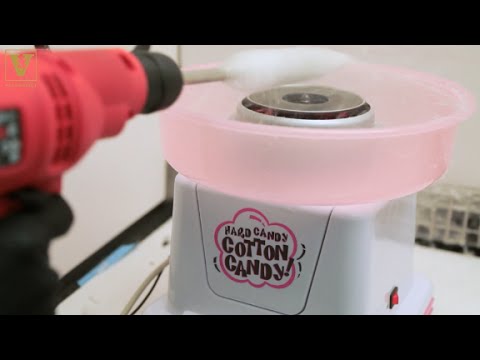At Disruptavision, we are committed to exploring the frontiers of innovation and shedding light on groundbreaking ideas that challenge the status quo. Our magazine is a haven for those who are passionate about revolutionary concepts that solve age-old problems with fresh, ingenious solutions. Today, we bring you an astounding breakthrough from the laboratories of Vanderbilt University that will leave you in awe.
Cotton Candy Machines: Spinning a Web of Capillary Wonders
Researchers at Vanderbilt University have embarked on an extraordinary journey that merges the worlds of confectionery delights and medical science. They have harnessed the power of cotton candy machines, traditionally associated with amusement parks and sweet treats, to create something truly extraordinary – blood capillaries.
Blood capillaries are the tiny, delicate vessels responsible for carrying oxygen and nutrients to every part of our body. Their intricate network is vital for the proper functioning of our organs and tissues. However, replicating the complexity of these microvessels in a laboratory setting has proven to be a formidable challenge for scientists until now.
Drawing inspiration from the delicate and interconnected strands of spun sugar in cotton candy, the researchers at Vanderbilt University saw the potential to revolutionize tissue engineering and regenerative medicine. By modifying the traditional cotton candy machine, they have devised an innovative technique to create artificial blood capillaries.
The process begins by substituting the sugary concoction with a biocompatible polymer solution. The modified cotton candy machine then spins ultra-thin polymer fibers, mimicking the intricate nature of natural blood capillaries. These fibers form a three-dimensional scaffold that can be precisely designed and tailored to meet the specific needs of various tissues and organs.
Once the scaffold is complete, it serves as a template for the growth of living cells. Researchers carefully seed the scaffold with endothelial cells, the cells responsible for lining blood vessels, and watch as they proliferate and intertwine along the polymer fibers, mimicking the natural formation of blood capillaries.
The resulting artificial blood capillaries hold immense potential for a wide range of applications. They can be used to study the effects of diseases on blood vessels, test new drugs, and even aid in the development of artificial organs. Furthermore, this breakthrough opens doors to more advanced tissue engineering techniques, potentially revolutionizing the field of regenerative medicine.
The repurposing of cotton candy machines to create blood capillaries not only showcases the ingenuity of the researchers at Vanderbilt University but also serves as a testament to the endless possibilities that arise when innovative thinking meets unconventional approaches. This remarkable breakthrough challenges conventional boundaries and offers a glimpse into a future where seemingly unrelated fields intertwine to deliver remarkable solutions.
Here at Disruptavision, we are exhilarated to share such groundbreaking innovations with our readers. Stay tuned as we continue to bring you captivating stories of disruptive ideas and remarkable ventures that are transforming the world we live in. Join us in celebrating the extraordinary and be inspired to make a difference.
Remember, at Disruptavision, innovation is not just a concept – it’s a vision for a brighter future.



























